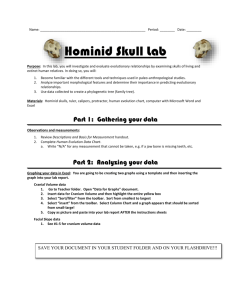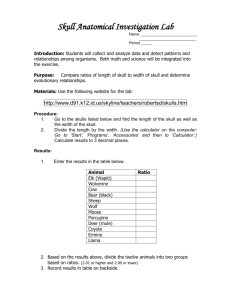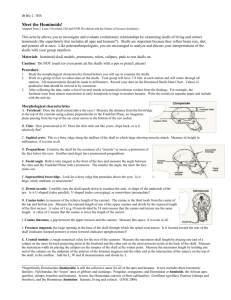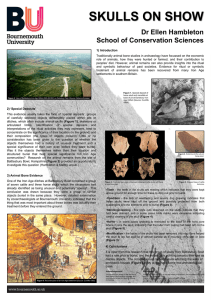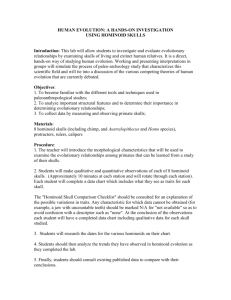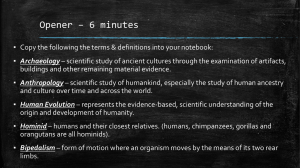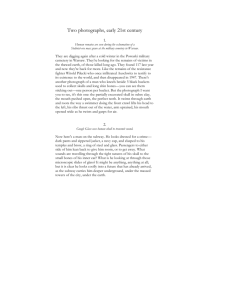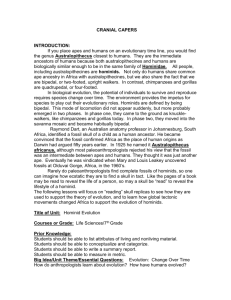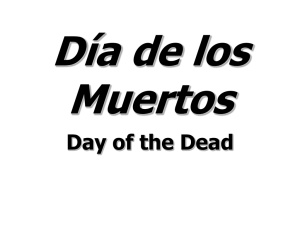THE COURSE OF HUMAN EVOLUTION
advertisement
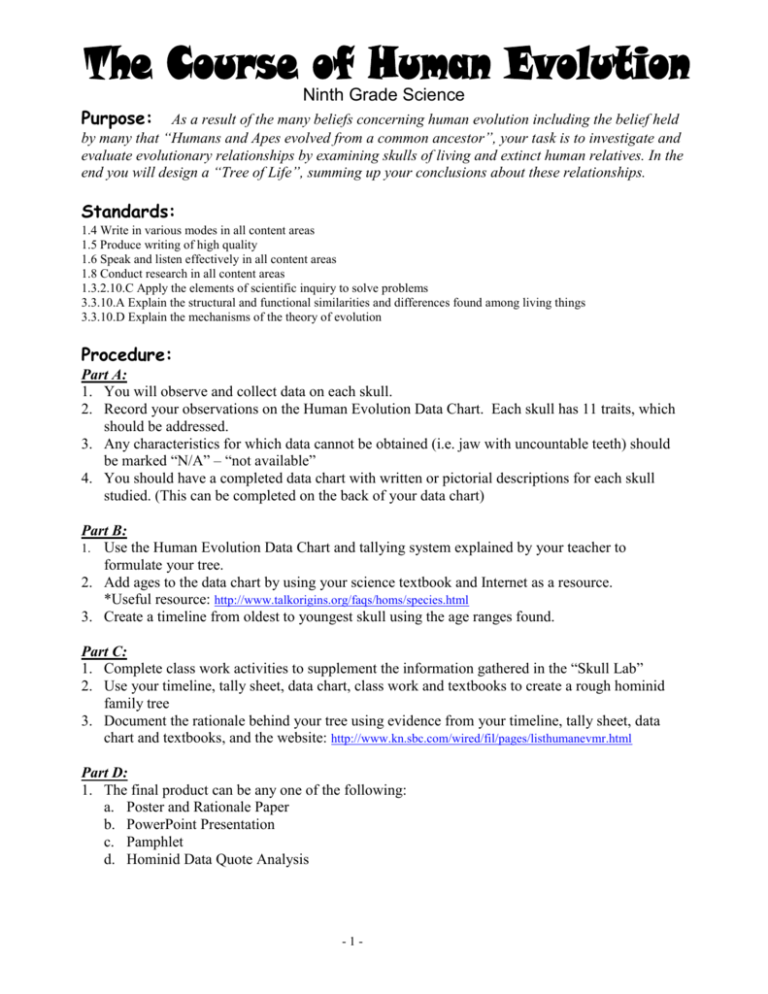
Ninth Grade Science Purpose: As a result of the many beliefs concerning human evolution including the belief held by many that “Humans and Apes evolved from a common ancestor”, your task is to investigate and evaluate evolutionary relationships by examining skulls of living and extinct human relatives. In the end you will design a “Tree of Life”, summing up your conclusions about these relationships. Standards: 1.4 Write in various modes in all content areas 1.5 Produce writing of high quality 1.6 Speak and listen effectively in all content areas 1.8 Conduct research in all content areas 1.3.2.10.C Apply the elements of scientific inquiry to solve problems 3.3.10.A Explain the structural and functional similarities and differences found among living things 3.3.10.D Explain the mechanisms of the theory of evolution Procedure: Part A: 1. You will observe and collect data on each skull. 2. Record your observations on the Human Evolution Data Chart. Each skull has 11 traits, which should be addressed. 3. Any characteristics for which data cannot be obtained (i.e. jaw with uncountable teeth) should be marked “N/A” – “not available” 4. You should have a completed data chart with written or pictorial descriptions for each skull studied. (This can be completed on the back of your data chart) Part B: 1. Use the Human Evolution Data Chart and tallying system explained by your teacher to formulate your tree. 2. Add ages to the data chart by using your science textbook and Internet as a resource. *Useful resource: http://www.talkorigins.org/faqs/homs/species.html 3. Create a timeline from oldest to youngest skull using the age ranges found. Part C: 1. Complete class work activities to supplement the information gathered in the “Skull Lab” 2. Use your timeline, tally sheet, data chart, class work and textbooks to create a rough hominid family tree 3. Document the rationale behind your tree using evidence from your timeline, tally sheet, data chart and textbooks, and the website: http://www.kn.sbc.com/wired/fil/pages/listhumanevmr.html Part D: 1. The final product can be any one of the following: a. Poster and Rationale Paper b. PowerPoint Presentation c. Pamphlet d. Hominid Data Quote Analysis -1- Product Checklist PowerPoint Presentation Ninth Grade Science For this product, your group should create a good copy of your Hominid Family Tree in a PowerPoint. The presentation must include your rationale or support for your group’s conclusions. Your information and discussion should include data that your group collected over the course of this unit, both with the skulls and with the readings and other activities we completed. The best way to approach the rationale or support is to make statements and find clear and concise information to support them. You may want to use the ideas you have developed in your analysis questions! Be sure you cite any information that did not come directly from your observations of the skulls. Rationale Example: Our group began the family tree by placing the ____________ skull at the bottom of the tree because we believed it is the most primitive. (this was your statement) _________ ________ had no forehead, a large supraorbital ridge, and large canines. It had a small cranial capacity as well, making it the most primitive of the skulls studied. This hominid also did not live in large groups and had a much smaller body size than the others (citation). (These were your supporting statements) PowerPoint Should Include: Each skull should have a picture to represent it Names and ages of skulls should be properly written Skulls should be arranged with consideration for their connection to each other Skulls should be arranged with consideration for their relative “ages” Each skull should be connected somehow to the family tree Rational or Support Should Include: Statements of fact from your family tree relationships Support from your “research” Cite all reference materials, including textbook Include a Works Cited page for referenced material Presentation: Each member of your group should participate Presentation should be approximately 10 minutes long Visual should enhance the explanation of the group conclusions Individiual Data Chart Should Include: All blocks should be completed The tally sheet should be completed For resources: http://www.kn.sbc.com/wired/fil/pages/listhumanevmr.html Product is due on March 15, 2006 -2-

